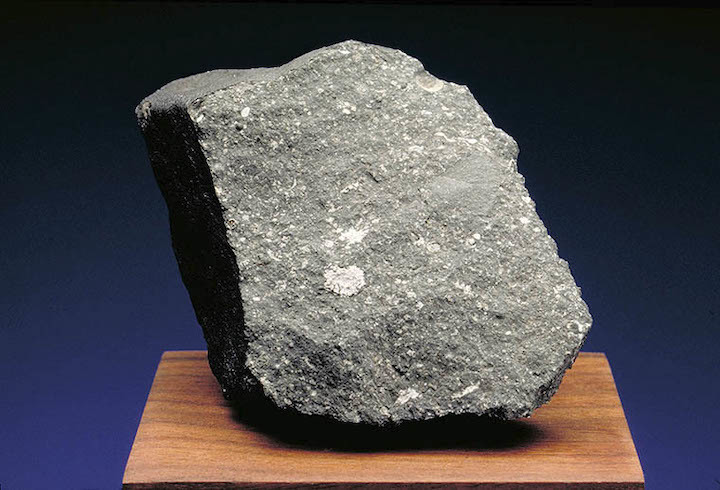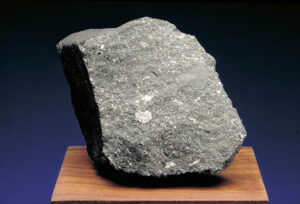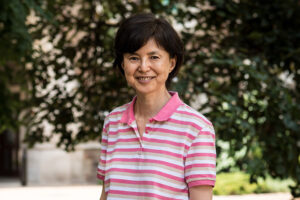30.01.2020

An unusual chunk in a meteorite may contain a surprising bit of space history, based on new research from Washington University in St. Louis.
Presolar grains — tiny bits of solid interstellar material formed before the sun was born — are sometimes found in primitive meteorites. But a new analysis reveals evidence of presolar grains in part of a meteorite where they are not expected to be found.

“What is surprising is the fact that presolar grains are present,” said Olga Pravdivtseva, research associate professor of physics in Arts & Sciences and lead author of a new paper in Nature Astronomy. “Following our current understanding of solar system formation, presolar grains could not survive in the environment where these inclusions are formed.”
Curious Marie is a notable example of an “inclusion,” or a chunk within a meteorite, called a calcium-aluminum-rich inclusion (CAI). These objects, some of the first to have condensed in the solar nebula, help cosmochemists define the age of the solar system. This particular chunk of meteorite — from the collection of the Robert A. Pritzker Center for Meteoritics and Polar Studies at the Chicago Field Museum — was in the news once before, when scientists from the University of Chicago gave it its name to honor chemist Marie Curie.

For the new work, Pravdivtseva and her co-authors, including Sachiko Amari, research professor of physics at Washington University, used noble gas isotopic signatures to show that presolar silicon carbide (SiC) grains are present in Curious Marie.
That’s important because presolar grains are generally thought to be too fragile to have endured the high-temperature conditions that existed near the birth of our sun.
But not all CAIs were formed in quite the same way.
“The fact that SiC is present in refractory inclusions tells us about the environment in the solar nebula at the condensation of the first solid materials,” said Pravdivtseva, who is part of Washington University’s McDonnell Center for the Space Sciences. “The fact that SiC was not completely destroyed in Curious Marie can help us to understand this environment a little bit better.
“Many refractory inclusions were melted and lost all textural evidence of their condensation. But not all.”
Like solving a mystery
Pravdivtseva and her collaborators used two mass spectrometers built in-house at Washington University to make their observations. The university has a long history of using noble gas isotopes as tracers of various nuclear processes and is home to one of the best-equipped noble gas laboratories in the world.Still, this work was uniquely challenging.
The researchers had 20 mg of Curious Marie to work with, which is a relatively large sample from a cosmochemistry perspective. They heated it up incrementally, increasing temperature and measuring the composition of four different noble gases released at each of 17 temperature steps.
“Experimentally, it is an elegant work,” Pravdivtseva said. “And then we had a puzzle of noble gas isotopic signatures to untangle. For me, it is like solving a mystery.”
Others have looked for evidence of SiC in such calcium-aluminum-rich inclusions in meteorites using noble gases before, but Pravdivtseva’s team is the first to find it.
“It was beautiful when all noble gases pointed to the same source of the anomalies — SiC,” she said.
“Not only do we see SiC in the fine-grained CAIs, we see a population of small grains that formed at special conditions,” Pravdivtseva said. “This finding forces us to revise how we see the conditions in the early solar nebula.”
Quelle: Washington University in St. Louis
